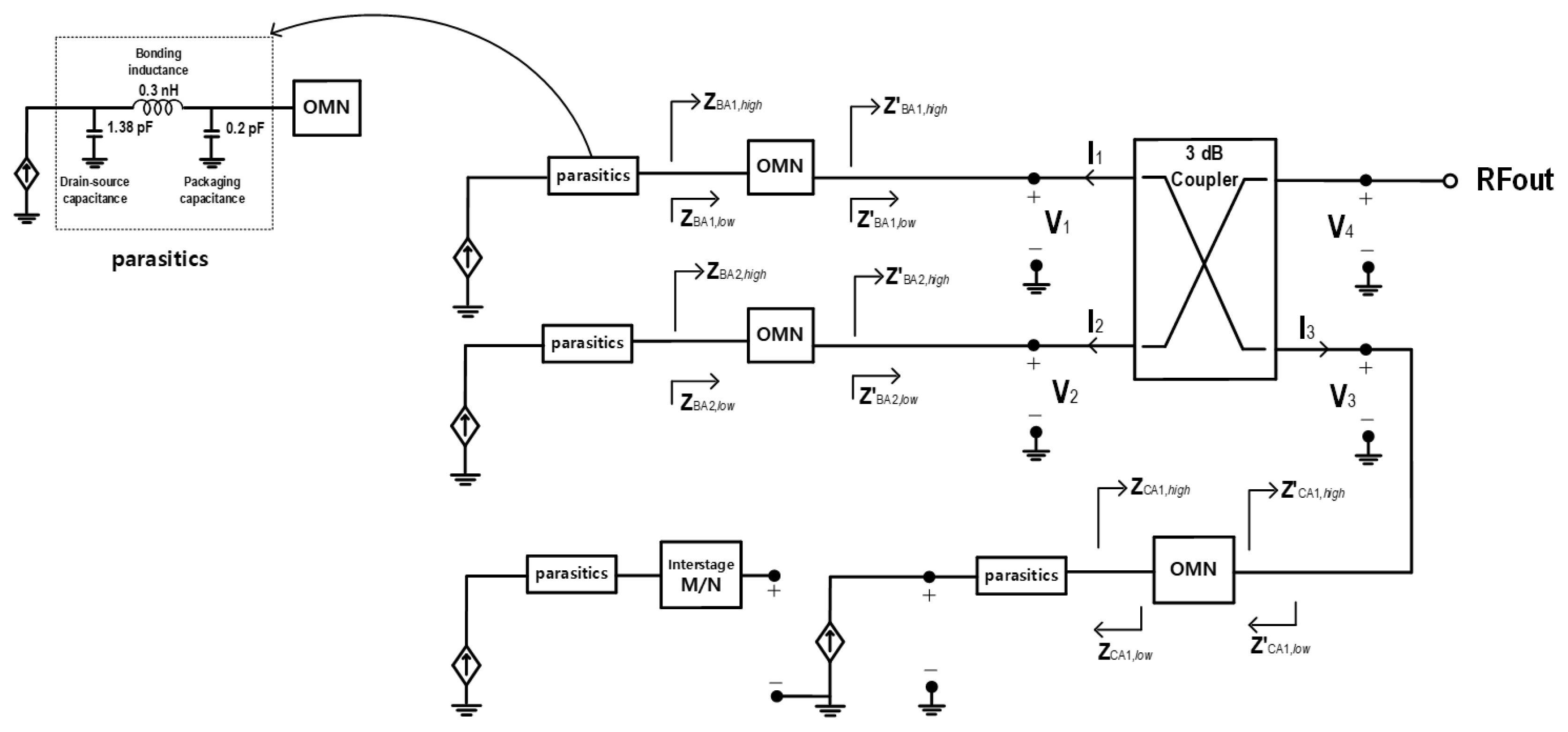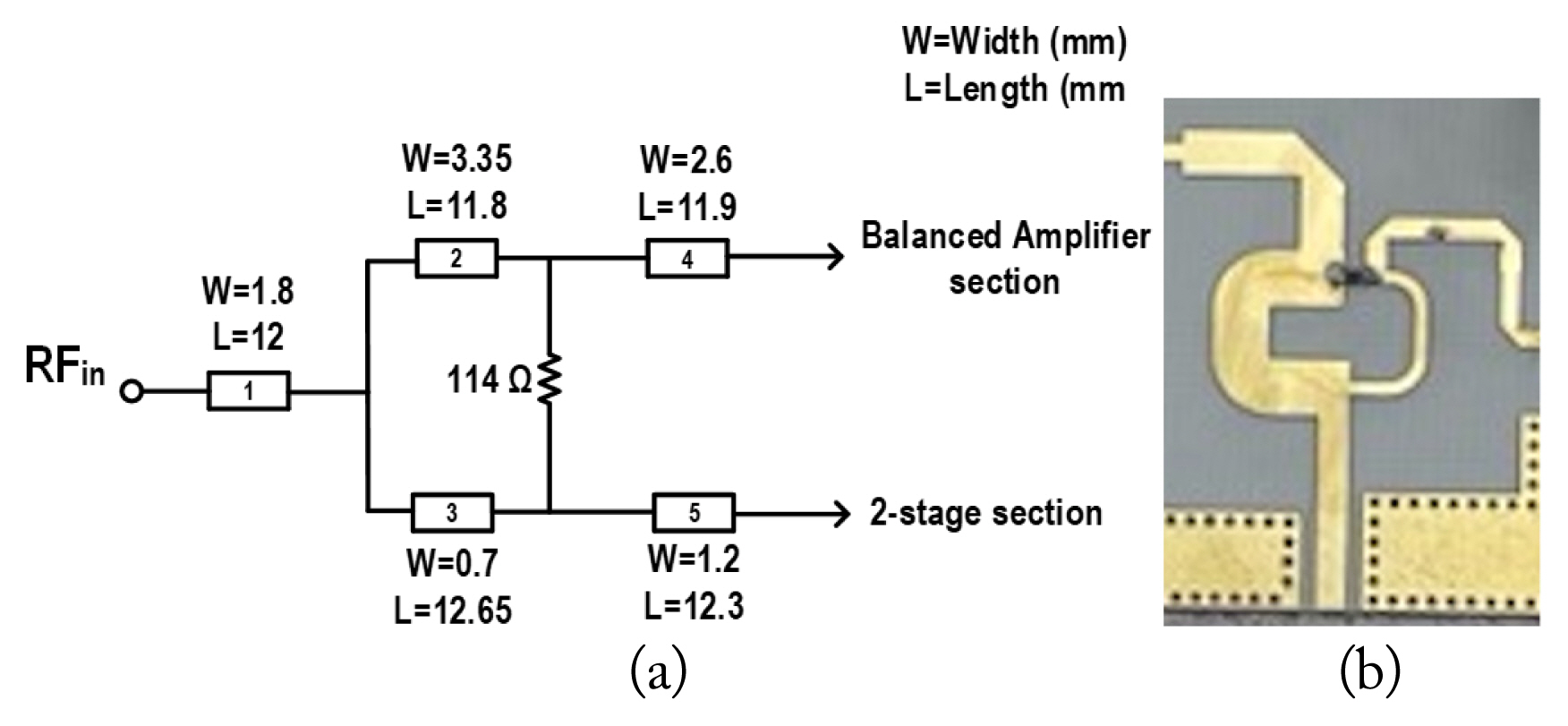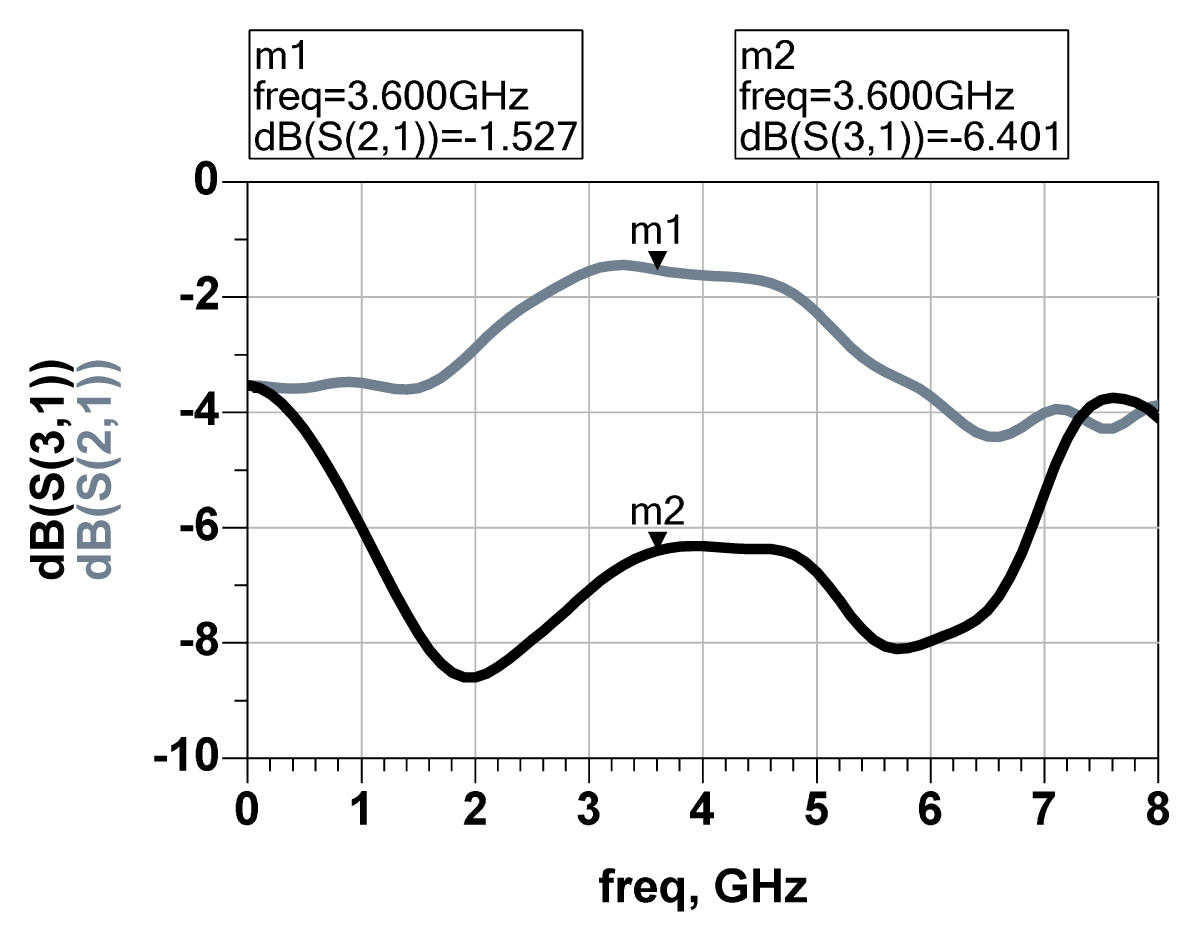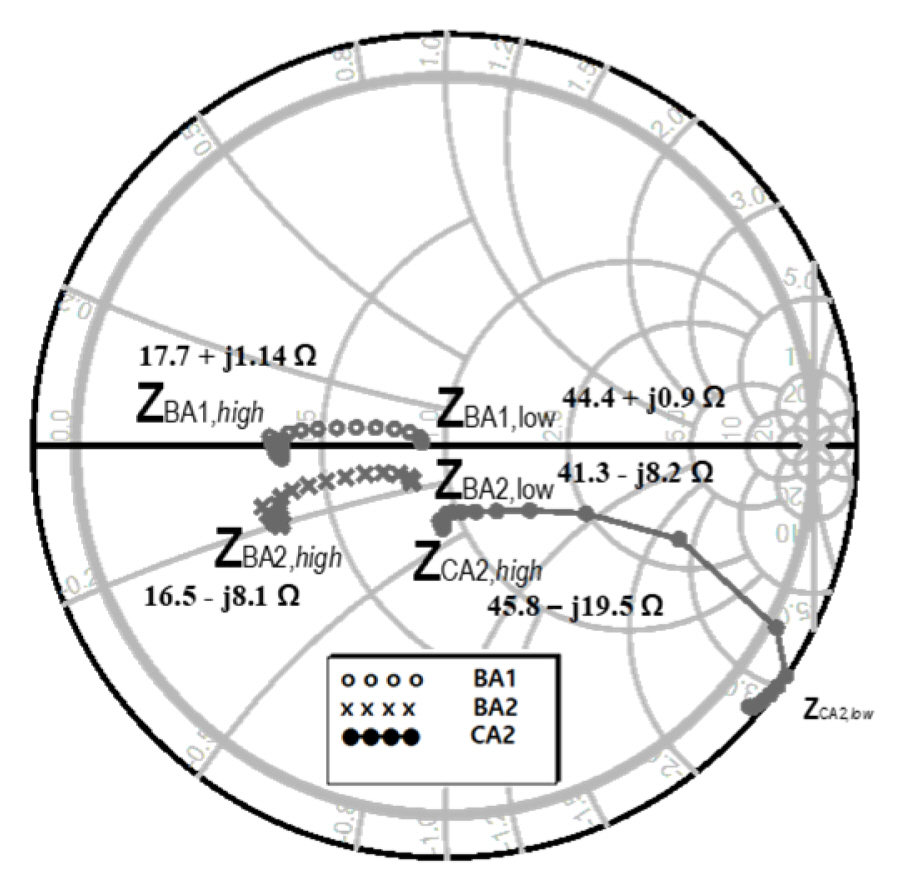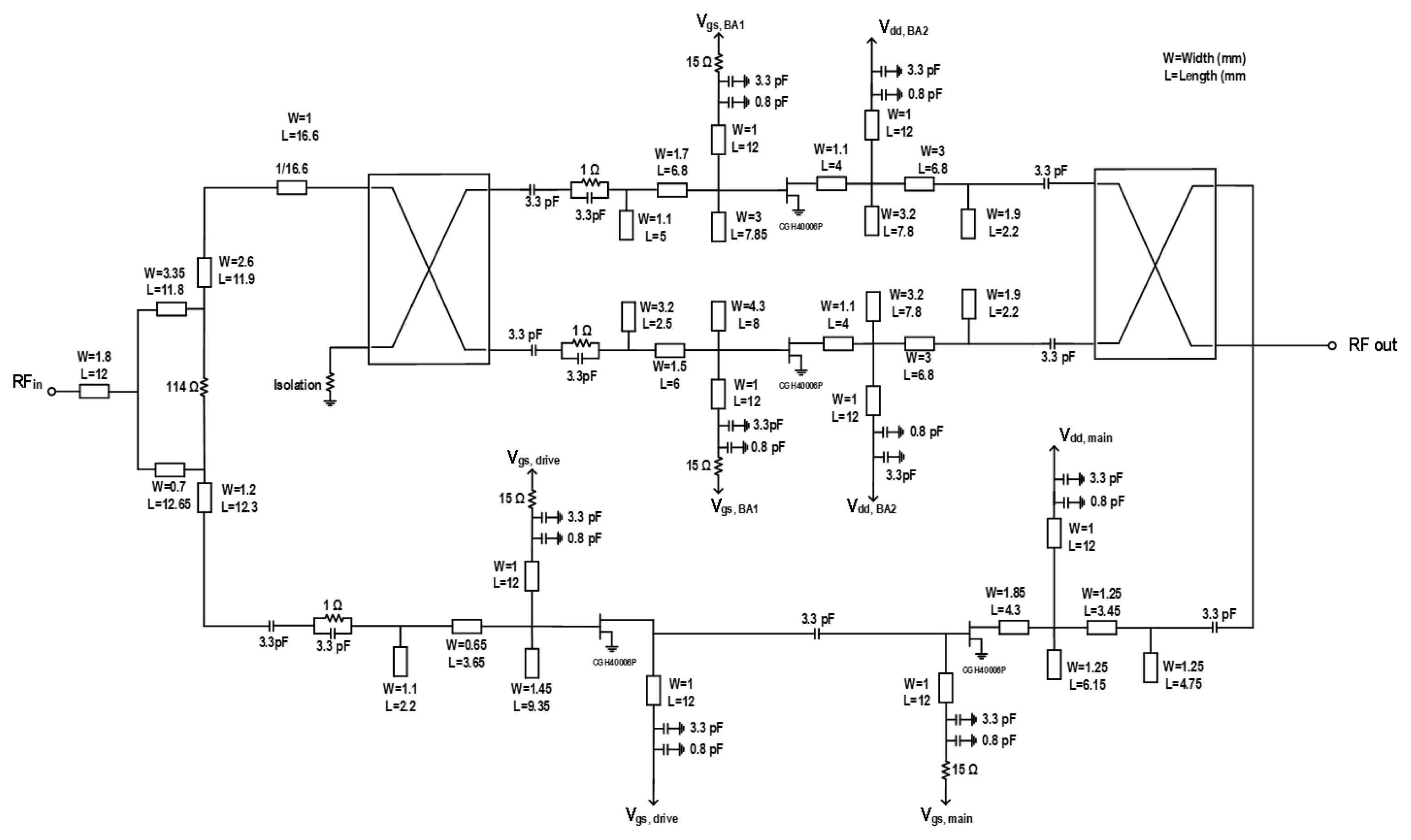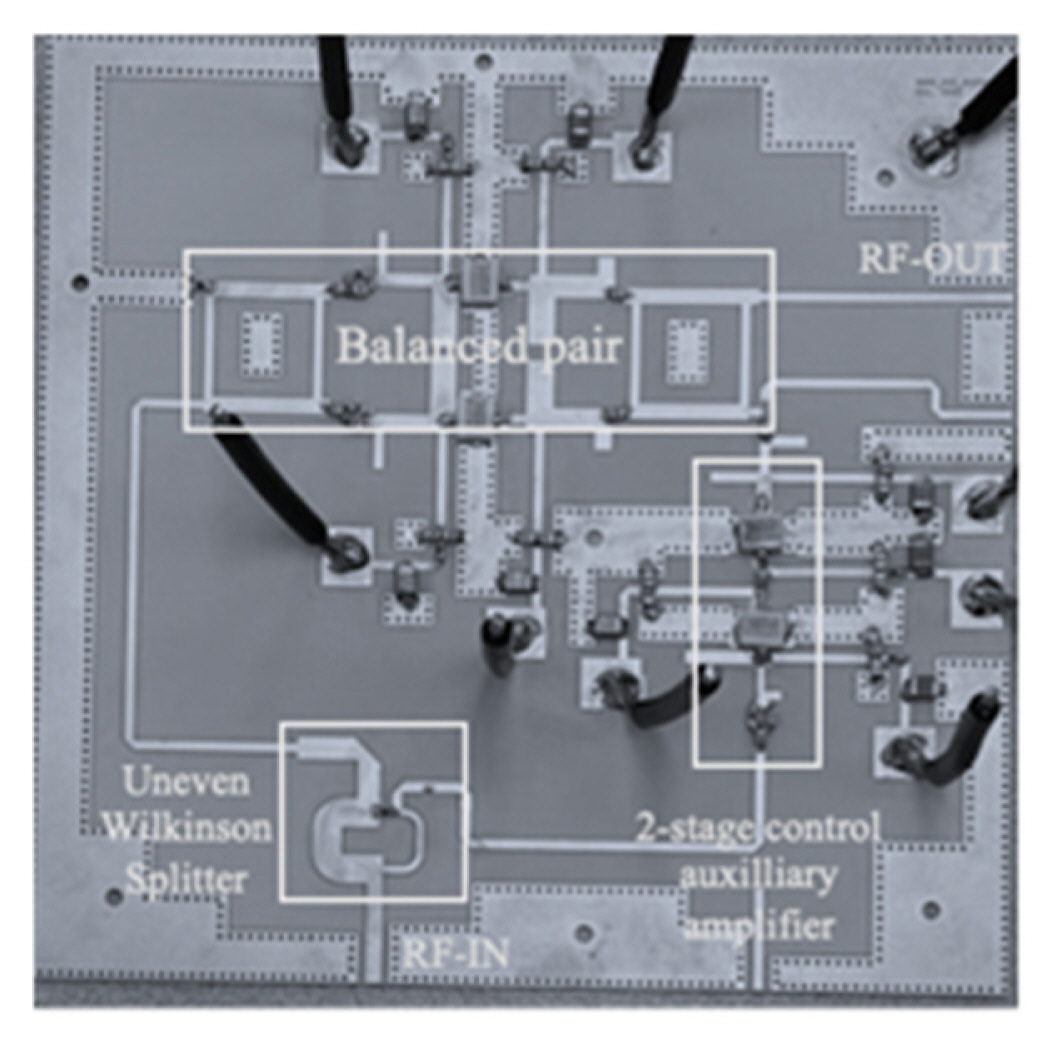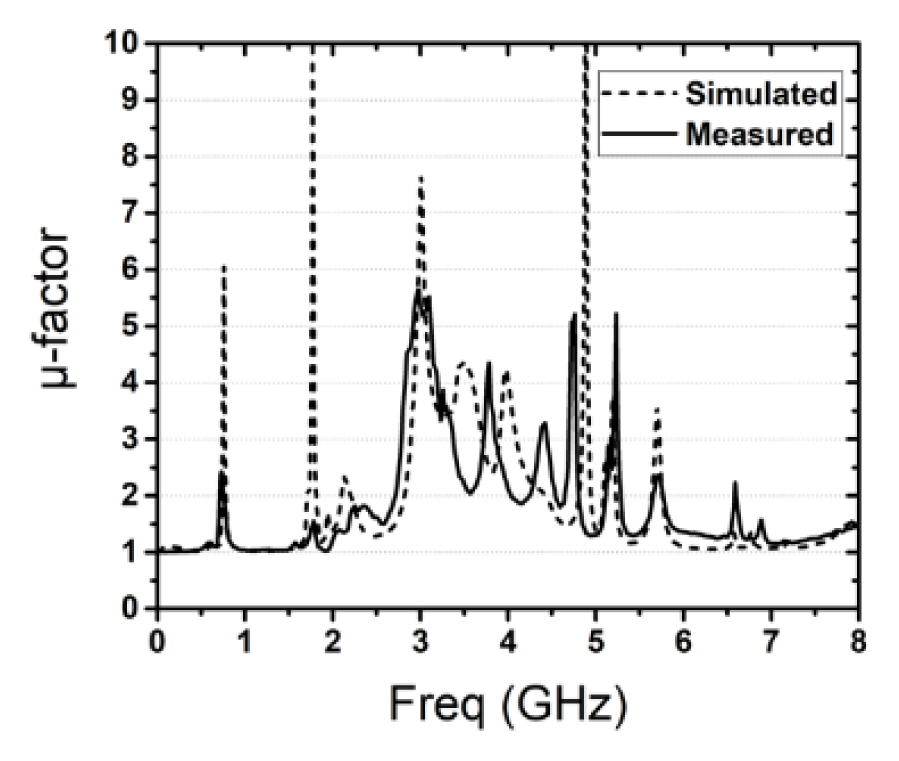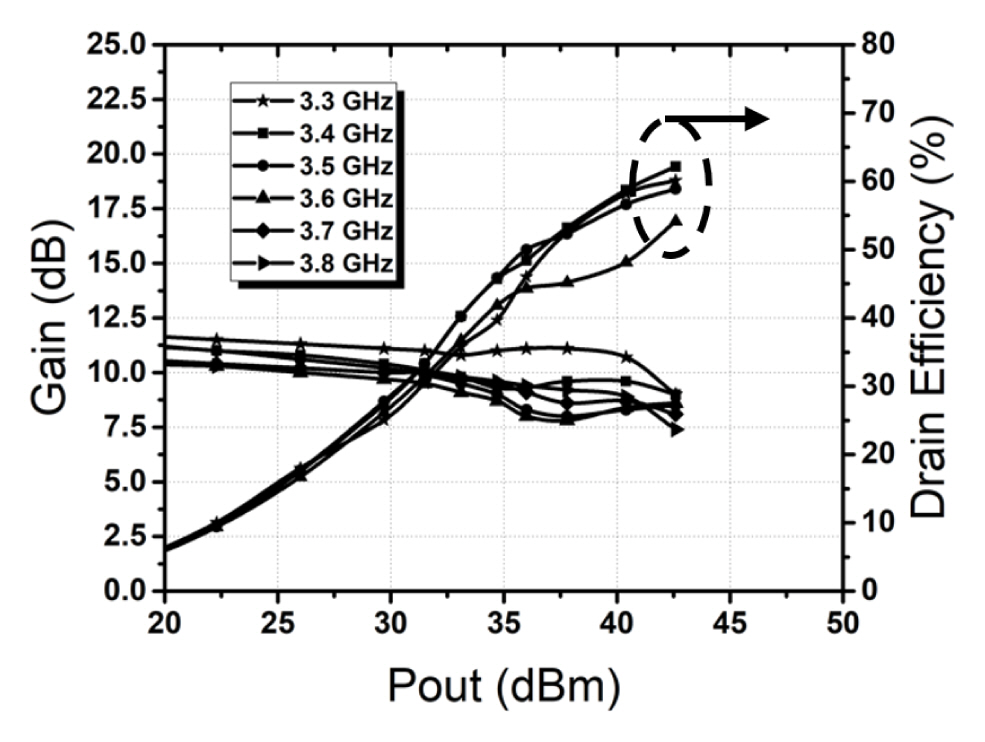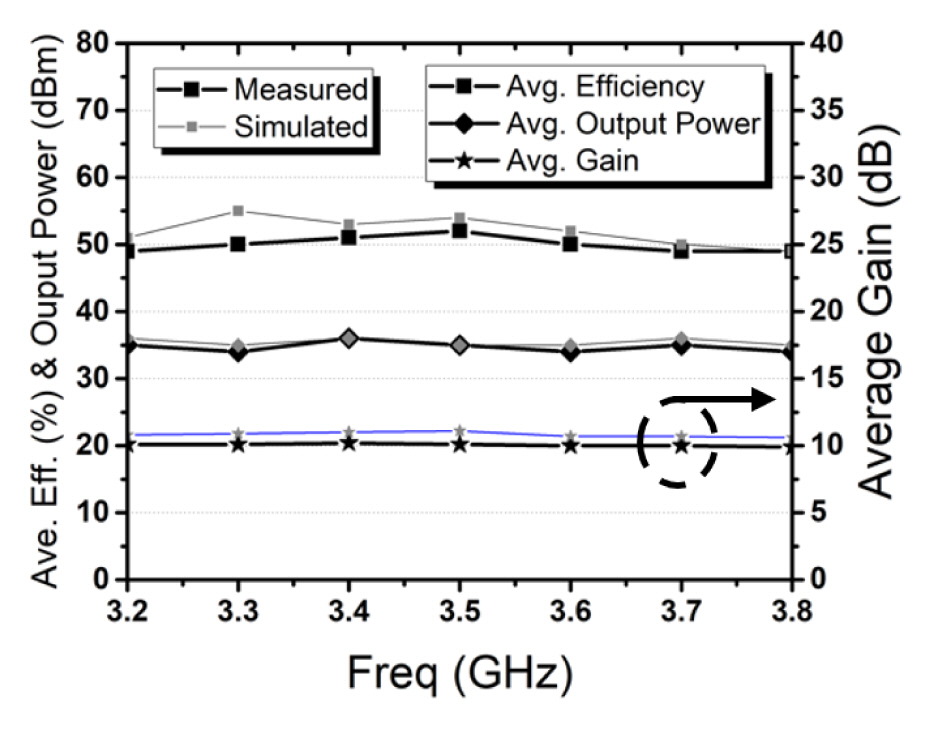1. W. H. Doherty, "A new high efficiency power amplifier for modulated waves,"
Proceedings of the Institute of Radio Engineers, vol. 24, no. 9, pp. 1163–1182, 1936.

2. H. Chireix, "High power outphasing modulation,"
Proceedings of the Institute of Radio Engineers, vol. 23, no. 11, pp. 1370–1392, 1935.

3. R. Quaglia and S. Cripps, "A load modulated balanced amplifier for telecom applications,"
IEEE Transactions on Microwave Theory and Techniques, vol. 66, no. 3, pp. 1328–1338, 2018.

4. D. J. Shepphard, J. Powell, and S. C. Cripps, "An efficient broadband reconfigurable power amplifier using active load modulation,"
IEEE Microwave and Wireless Components Letters, vol. 26, no. 6, pp. 443–445, 2016.

5. P. H. Pednekar and T. W. Barton, "RF-input load modulated balanced amplifier," In:
Proceedings of 2017 IEEE MTT-S International Microwave Symposium (IMS); Honololu, HI. 2017, pp 1730–1733.

6. P. H. Pednekar, W. Hallberg, C. Fager, and T. W. Barton, "Analysis and design of a Doherty-like RF-input load modulated balanced amplifier,"
IEEE Transactions on Microwave Theory and Techniques, vol. 66, no. 12, pp. 5322–5335, 2018.

7. Y. Cao and K. Chen, "Pseudo-Doherty load-modulated balanced amplifier with wide bandwidth and extended power back-off range,"
IEEE Transactions on Microwave Theory and Techniques, vol. 68, no. 7, pp. 3172–3183, 2020.


8. P. Saad and R. Hou, "Symmetrical load modulated balanced power amplifier with asymmetrical output coupling for load modulation continuum,"
IEEE Transactions on Microwave Theory and Techniques, vol. 70, no. 4, pp. 2315–2327, 2022.

9. Y. Cao and K. Chen, "Hybrid asymmetrical load modulated balanced amplifier with wide bandwidth and three-way-Doherty efficiency enhancement,"
IEEE Microwave and Wireless Components and Letters, vol. 31, no. 6, pp. 721–724, 2021.


10. Y. Cao, H. Lyu, and K. Chen, "Asymmetrical load modulated balanced amplifier with continuum of modulation ratio and dual-octave bandwidth,"
IEEE Transactions on Microwave Theory and Techniques, vol. 69, no. 1, pp. 682–696, 2021.


11. Y. Cao, H. Lyu, and K. Chen, "Load modulated balanced amplifier with reconfigurable phase control for extended dynamic range," In:
Proceedings of 2019 IEEE MTT-S International Microwave Symposium (IMS); Boston, MA. 2019, pp 1335–1338.

12. D. J. Collins, R. Quaglia, J. R. Powell, and S. C. Cripps, "The orthogonal LMBA: a novel RFPA architecture with broadband reconfigurability,"
IEEE Microwave and Wireless Components Letters, vol. 30, no. 9, pp. 888–891, 2020.

13. D. M. Pozar, Microwave Engineering. 4th ed. Hoboken: NJ: John Wiley & Sons, 2012.
14. S. C. Cripps, RF Power Amplifiers for Wireless Communications. 2nd ed. Norwood, MA: Artech House, 2006.
15. Y. C. Yoon and Y. Kim, "Unequal power dividers using uniform impedance transmission lines with stubs,"
Journal of Electromagnetic Engineering and Science, vol. 21, no. 1, pp. 44–50, 2021.


16. Y. Jang, K. Jeong, J. Kim, D. Lee, and D. Ahn, "A wideband Doherty combiner with phase variation compensation using LTCC applicable for high power transmission,"
Journal of Electromagnetic Engineering and Science, vol. 22, no. 5, pp. 550–554, 2022.


17. W. Hallberg, M. Ozen, D. Gustafsson, K. Buisman, and C. Fager, "A Doherty power amplifier design method for improved efficiency and linearity,"
IEEE Transactions on Microwave Theory and Techniques, vol. 64, no. 12, pp. 4491–4504, 2016.

18. M. Akbarpour, M. Helaoui, and F. M. Ghannouchi, "Analytical design methodology for generic Doherty amplifier architectures using three-port input/output networks,"
IEEE Transactions on Microwave Theory and Techniques, vol. 63, no. 10, pp. 3242–3253, 2015.

19. D. J. Shepphard, J. Powell, and S. C. Cripps, "A broadband reconfigurable load modulated balanced amplifier (LMBA)," In:
Proceedings of 2017 IEEE MTT-S International Microwave Symposium (IMS); Honololu, HI. 2017, pp 947–949.

20. W. Shi, S. He, X. Zhu, B. Song, Z. Zhu, G. Naah, and M. Zhang, "Broadband continuous-mode Doherty power amplifiers with noninfinity peaking impedance,"
IEEE Transactions on Microwave Theory and Techniques, vol. 66, no. 2, pp. 1034–1046, 2018.

21. P. Saad, R. Hou, R. Hellberg, and B. Berglund, "The continuum of load modulation ratio from Doherty to traveling-wave amplifiers,"
IEEE Transactions on Microwave Theory and Techniques, vol. 67, no. 12, pp. 5101–5113, 2019.

22. J. Pang, Y. Li, M. Li, Y. Zhang, X. Y. Zhou, Z. Dai, and A. Zhu, "Analysis and design of highly efficient wideband RF-input sequential load modulated balanced power amplifier,"
IEEE Transactions on Microwave Theory and Techniques, vol. 68, no. 5, pp. 1741–1753, 2020.





